Well-Being & Ecology _|_ Issue 5, 2017
Ayurveda: A Medical Science Based on Consciousness
How India’s ancient system of healing recognises the unity of the body and the mind


Ayurveda: A Medical Science Based on Consciousness
How India’s ancient system of healing recognises the unity of the body and the mind
In our new occasional series exploring the foundations of well-being, Elizabeth Roberts speaks of her interest in Ayurveda, the ancient medical science of India, and talks to her mentor, Dr Sunil Joshi, about the principles behind it. With its emphasis upon diet and the need to tailor medication to the individual constitution, as well as its insight into the effects of stress upon bodily health, Ayurveda is increasingly seen to be compatible with contemporary western medicine.
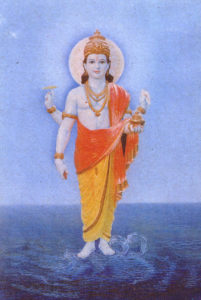 Over the past few decades, Ayurveda has become increasingly well known in the west, following on the extraordinary success of yoga, of which it is the medical system. The popularity of both yoga and Ayurveda is due to the holistic and individualised approach that each encompasses.
Over the past few decades, Ayurveda has become increasingly well known in the west, following on the extraordinary success of yoga, of which it is the medical system. The popularity of both yoga and Ayurveda is due to the holistic and individualised approach that each encompasses.
What is less well known and understood is the ancient Vedic vision – known as Samkhya Dharshana – on which these disciplines are based and from which their holistic and individualised approach comes. Samkhya literally means ‘enumeration’ or ‘counting’; it charts the coming into being of the universe and with it the human soul, step-by-step and moment-by-moment, from its origin in pure consciousness. The word darshana means ‘to see’ – that is, it is a way to perceive reality. It is based on the direct observation and experience of the rishis (seers) in their meditations, as they retraced their being back to its origin and in so doing came to witness the order of manifestation.
In contrast to current scientific thinking, which sees consciousness as an epiphenomenon, a by-product that occurs when matter reaches a certain degree of complexity, the Vedic system of knowledge – from which Ayurveda originates – sees things the other way round. It states that matter is derived from consciousness. Consciousness, followed by its manifested principle prāna (usually translated as life force or movement), is the primary attribute of the universe. This vision perceives the entire universe as an intelligent, conscious whole. Even so-called inanimate things such as rocks and minerals are understood to have some level of consciousness, as they are irrevocably connected to the cosmic intelligence of which they are an expression.
Yoga and Ayurveda are complementary sciences in this world view. Or one could say they are the same science of the life force (prāna) viewed from different perspectives. Yoga and Ayurveda are the practical applications of Vedic knowledge in their respective fields. As David Frawley, a Vedic scholar and Ayurvedic vaidya (physician) from America, explains:
Ayurveda is the Vedic science of healing for both body and mind. Yoga is the Vedic science of self-realization that depends on a well-functioning body and mind… The foundation of yoga should be Ayurveda and the fruits of Ayurveda, yoga.
Connecting with the intelligence of the body
 My first experience of Ayurveda came after completing my yoga teacher training with Yoga Scotland [/] in 2005. I was immediately attracted by the beauty of its logic and its ability to make connections between things apparently disparate. Who would have known that there is a connection between the colon, the bones, the ears and the nervous system for instance? Or between the small intestine, the eyes and the blood? It had been a regret from my mid-20s that I did not heed my biology teacher’s encouragement to study sciences – which would have enabled me to take a degree in medicine – but followed the arts instead.
My first experience of Ayurveda came after completing my yoga teacher training with Yoga Scotland [/] in 2005. I was immediately attracted by the beauty of its logic and its ability to make connections between things apparently disparate. Who would have known that there is a connection between the colon, the bones, the ears and the nervous system for instance? Or between the small intestine, the eyes and the blood? It had been a regret from my mid-20s that I did not heed my biology teacher’s encouragement to study sciences – which would have enabled me to take a degree in medicine – but followed the arts instead.
However, my interest in things medical has always been principally in how to enhance the positive potential of our health and well-being, and this was just the knowledge and understanding that Ayurveda seemed to afford on an individual basis. I was fortunate to encounter some excellent teachers through the European Institute of Vedic Studies [/]. We followed the David Frawley syllabus [/] on a course that covered Ayurvedic philosophy, Ayurvedic anatomy and physiology, diagnosis and treatment based on diet and lifestyle. We were taught by Atreya Smith [/], whose many years of practical experience with patients in Europe really brought the subject to life.
FOLLOW AND LIKE US
——————————————
——————————————
——————————————
These studies culminated in Nagpur, India, at the Panchakarma Clinic [/] of Dr Sunil Joshi, a world-famous Ayurvedic physician who also practices in the USA and Europe, and author of a well-known book, Ayurveda and Panchakarma: the Science of Health and Rejuvenation. Patients from abroad come to stay for 3–4 weeks at a time for treatment at his Nagpur centre, and there are a large number of local outpatients. During our stay, we studied the main classical text of Ayurveda, the Charaka Samhita [/], for four hours in the morning, and in the afternoons learned how to make the medicated oils and ghees which are so important to Ayurvedic treatment, as well as experiencing and practicing massage and other treatments in the therapy rooms.

Dr Sunil Joshi
I have subsequently returned to Dr Joshi’s clinic on several occasions for panchakarma and he has become something of a mentor to me, inspiring a deeper understanding of the truly holistic nature of these Vedic/yogic sciences. During my last visit in January 2017, I had the chance to speak to him about the foundations of Ayurvedic medicine, and how they can be reconciled with modern western understanding. He began by explaining that from the perspective of Vedic knowledge, no aspect of life is disconnected from its source; this fundamental knowledge determines the way the vaidya works with his patients:
Every person is potentially spiritual, whether they believe it or not. What is spirituality? It’s nothing but the truth that you are connected with your self, which is a soul. When I’m working with a patient, I’m not just working on their physical body. The physical body is mainly controlled by that entity that we call self or soul, or pure awareness or consciousness, or consciousness of knowledge, which is present, in-built, in every single human being. If I can connect with that, everything opens up to me. And it’s very easy then to navigate that person through their condition. That’s the beauty of practising Ayurveda.
Ayurveda translates as the science (veda) of life (ayu). One definition from the classics, used by Dr Joshi, defines it as the intelligent coordination of body, senses, mind and jivatman (embodied spirit or soul) – which describe four aspects of the same consciousness at different levels of expression. Therefore, Ayurvedic treatments are not just considered to be physical treatments for the body, but they affect all levels of our being. As the person comes progressively closer to their natural constitution (prakriti), so they will come better to understand who they are and what is their dharma, or purpose in life.
There is no doubting Dr Joshi’s dedication to what he calls ‘this beautiful science’. This stems from the days of his medical training when he was set to become a surgeon of modern western medicine. At that time his mother became very ill. She contracted amoebic hepatitis – a very common illness in India, carried in the water. There is no treatment for the disease in western medicine but the family did not know this and took her to hospital to see the family doctor. But after seeing her, he said that there was nothing to be done, and he gave her only a week or two to live.
However, his father knew an Ayurvedic physician, Dr Kuti, and when they returned home, he asked him to see his mother. Dr Kuti gave a prognosis that was the exact opposite of the other doctor’s. He told her to follow a particular strict diet, take certain herbs and medicines, have bastis (medicated enemas), and promised that in 15 days she would be better. And she was! This inspired Dr Joshi to change his medical degree to specialise in traditional medicine, and Dr Kuti became his first teacher. As for his mother, she is now nearly 82, and still working and supporting her son in his medical work.
Dr Joshi has never regretted his decision: “I didn’t want to practice a science where I have to tell someone I cannot help them. I want to be able to say, ‘OK let’s work from here. Where others cannot help you, let’s help you go further’.” He clearly loves Ayurveda and will do whatever he can to be of service to it.
I feel as though I have known this science for many, many lifetimes. When I talk about it, it is effortless for me. I can talk about modern medicine as well, and about disease and symptoms, and all that, but I cannot do so effortlessly. So probably I knew Ayurvedic knowledge already; it was in my previous experiences, in the culturing of my soul, and that’s why I resonate with it like this.

Page from the Sushruta Samhita, one of the two original texts of Ayurveda – the other being the Charaka Samhita. The text presents itself as the teachings of Dhanvantari to his pupil Sushruta. Wellcome Library, London, copyrighted under Creative Commons Attribution only licence CC BY 4.0 http://creativecommons.org/licenses/by/4.0/
The science of the five elements and the three doshas
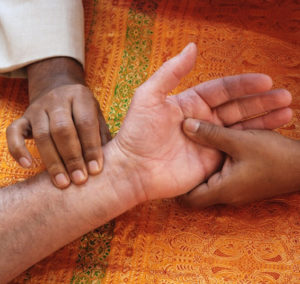 The Vedic system of medicine follows the Vedic perception of the conscious intelligence of nature. The early Ayurvedic scientists were able to observe that the attributes of their environment grouped together as five ‘great elements’ or states of matter – space, air, fire, water and earth. Understanding that the human being was a microcosm of this macrocosm, they recognised the way that the five elements combine to create what are called the three doshas in the human constitution and that of other mammals.
The Vedic system of medicine follows the Vedic perception of the conscious intelligence of nature. The early Ayurvedic scientists were able to observe that the attributes of their environment grouped together as five ‘great elements’ or states of matter – space, air, fire, water and earth. Understanding that the human being was a microcosm of this macrocosm, they recognised the way that the five elements combine to create what are called the three doshas in the human constitution and that of other mammals.
The doshas are metaphors for the way the body’s intelligence promotes health through its different systems. Vata (air and ether), pitta (fire and water) and kapha (water and earth) are the intelligent powers of movement, transformation and cohesion that both constitute and govern the body. As the functional intelligences of the body, the doshas are subtle in nature. They cannot be seen under a microscope, but they can be identified through their qualities. Hot/cold, wet/dry, light/heavy, etc. are like the language of the doshas, which are perceptible through the normal human senses, and every Ayurvedic practitioner has to learn to ‘read’ the world, and their patients, through this qualitative language.
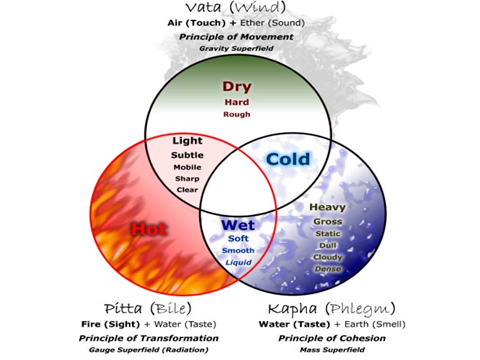
According to Ayurveda, each person is born with a constitution (prakriti) that is a unique expression of these doshas. Dr Joshi explains:
If you look inside the anatomy of the body, we are all more or less identical. That’s why the surgeon can dare to open the body, because he knows where to find things. But when it comes to our response to the world, we are not similar. Dosha means uniqueness. We each carry something unique in us which shows as a set of likes and dislikes which come from within. For instance, nobody tells you to love the colour pink or blue. Some people love yellow, others black. One person loves the guitar, another the sitar, another loves rock and roll, another classical music. Some love to meditate, some to dance. It all comes from within. So who is bringing that to you? It’s the doshas – that uniqueness in you.
Dr Joshi describes the doshas as:
… a natural intelligence that is flowing through each tissue, each cell of the body, making a beautiful connection between your mind, your soul, your senses and your physical body.
So doshas have a controlling influence on the mind also: in particular, they affect whether the mind’s qualities will be disturbed or balanced. If the balance of vata, pitta and kapha matches the person’s native constitution, that person is healthy. The primary cause of ill health is that one or more of the doshas goes out of balance (vikriti).
The purpose of Ayurvedic medicine is to treat the cause of the illness at its doshic root, not simply to treat or suppress the symptoms. Any illness can be caused by an imbalance in any of the doshas, so there is no standard remedy for any particular ailment and each case must be treated individually. It is the skill of the Ayurvedic vaidya to tune into the state of the doshas using detailed questioning, observation and pulse diagnosis, and so to determine any imbalances present. S/he then uses food, herbs, minerals and other therapeutic substances to harmonise their consciousness with the consciousness of the patient and to correct and increase the intelligent functioning of body and mind.

Traditional Ayurvedic oil massage. Photography Zoonar GmbH [/] / Alamy Stock Photo
Agni – our digestive fire
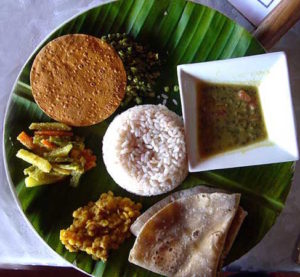 Ayurveda gives great importance to digestion as a source of health and disease, far more so than modern medicine, although that is beginning to change with recent discoveries of the importance of the human microbiome [/]. So if we want to follow Ayurvedic nutritional guidelines, the first thing we must do is learn to recognise our digestive capacity.
Ayurveda gives great importance to digestion as a source of health and disease, far more so than modern medicine, although that is beginning to change with recent discoveries of the importance of the human microbiome [/]. So if we want to follow Ayurvedic nutritional guidelines, the first thing we must do is learn to recognise our digestive capacity.
What determines the quality and capacity of our digestion, and hence our ability to derive energy from our food and build healthy tissue, is what Ayurveda calls our state of agni, our digestive ‘fire’. Dr Joshi explains that everything we take into the body goes to the digestive system where it is ‘cooked’ and transformed, and what is transformed then goes to nourish and build the tissues. Agni is the principle of transformation at every level.
Transformation of food; transformation of experiences that come from the senses; transformation of thoughts that come through the mind whereby they are converted into something positive – all this is done by agni. Fire is its metaphor. On a physical level it expresses its presence in various forms, whether they be digestive juices or enzymes or the different types of gut hormones that have been identified by today’s science which are constantly helping the nervous system to be balanced.
Modern medicine has started saying that the gut is a second brain. Why is that? Because there is a nervous system that sits in the gut, the enteric nervous system [/], which controls the central nervous system or autonomous nervous system. Ayurveda knew this 5,000 years ago. So if you take care of the enteric nervous system, you’ll also be taking care of your central nervous system.
All this means that if the agni is not functioning well, all sorts of problems can arise. Most important, perhaps, is the effect upon the immune system and consequently our resistance to disease; but it also influences our health and vitality in general. Even depression, according to Ayurveda, is an expression of manda agni (low or sluggish agni).
Early detection and prevention
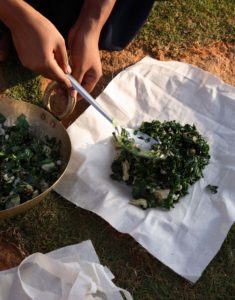 One of the great strengths of Ayurveda is its ability to detect imbalances long before they develop into diseases that can be given a name. This enables preventative action to be taken by observing the early signs and symptoms. According to Ayurveda, disease progresses inside the body in six stages. The first three stages happen to everyone as part of the natural cycle as the balance of the doshas constantly change. Dr Joshi likens this to the cycles in nature, which the body mirrors. In the morning there is more humidity (kapha), in the afternoon the temperature rises (pitta), in the late afternoon it gets windier (vata). In the same way, when one element becomes aggravated in the body, another calms down. This natural rhythm is always taking place, and so the first three stages of disease are always happening. But they are reversible.
One of the great strengths of Ayurveda is its ability to detect imbalances long before they develop into diseases that can be given a name. This enables preventative action to be taken by observing the early signs and symptoms. According to Ayurveda, disease progresses inside the body in six stages. The first three stages happen to everyone as part of the natural cycle as the balance of the doshas constantly change. Dr Joshi likens this to the cycles in nature, which the body mirrors. In the morning there is more humidity (kapha), in the afternoon the temperature rises (pitta), in the late afternoon it gets windier (vata). In the same way, when one element becomes aggravated in the body, another calms down. This natural rhythm is always taking place, and so the first three stages of disease are always happening. But they are reversible.
However, if we regularly eat things that are not good for us or do not match our constitution, or if we lead a lifestyle where we suffer constant stress, these stages get disturbed. Then we progress to the fourth stage, which is that of ‘provocation’; for instance, after eating a very rich meal, we may start to get bodily signals from our tongue and our gut, which tell us that we have eaten something too acidic. These signals are the fourth stage, telling us that we should stop eating this kind of food. If we ignore it, then we progress to the fifth stage, which is where a disease can first be detected and named – for example, hyperacidity. If we continue to ignore that, then we progress to the sixth stage, which is called ‘complications’ or ‘diversification’. Dr Joshi explains:
Usually up to the fourth or fifth stage, Ayurveda can help people and I get lots of patients in the fifth stage coming to my clinics. But today’s science, whether it is using a microscope, an endoscope, a colonoscope, or any other ‘scope’, cannot detect a disease before it reaches the fourth stage. It can be detected at the fifth stage – which is already late – or sometimes only at the sixth stage, which is a really difficult one to treat.
One of the major preventative treatments, in which Dr Joshi has specialised, is panchakarma, the strongest cleansing therapy of Ayurveda, which aims to balance the doshas and so prevent disease developing – or, if it is already present, to prevent it progressing further or even to reverse it. It is found that panchakarma is highly effective for most digestive disorders, and for conditions like arthrosis and arthritis; skin ailments like eczema or autoimmune diseases, and various types of allergies if they are picked up in the early stages. Patients suffering from mental illness or psychosomatic disorders can also be helped by it.
Dr Joshi believes Ayurveda can work successfully together with modern medicine, using blood tests from the laboratory and modern technology to complement Ayurvedic methods like pulse diagnosis. But he is also clear about the difference between the two systems:
Modern medicine works on the symptoms and Ayurveda works on the base. This is because modern medicine misses the important natural intelligence of the doshas. It doesn’t know about them because it only believes in evidence, but you cannot give evidence of nature. You have to believe that it is there inside, just the same as it is outside.
P2W Episode 08: Ayurveda with Dr Sunil Joshi from Paths to Wellness [/] on Vimeo
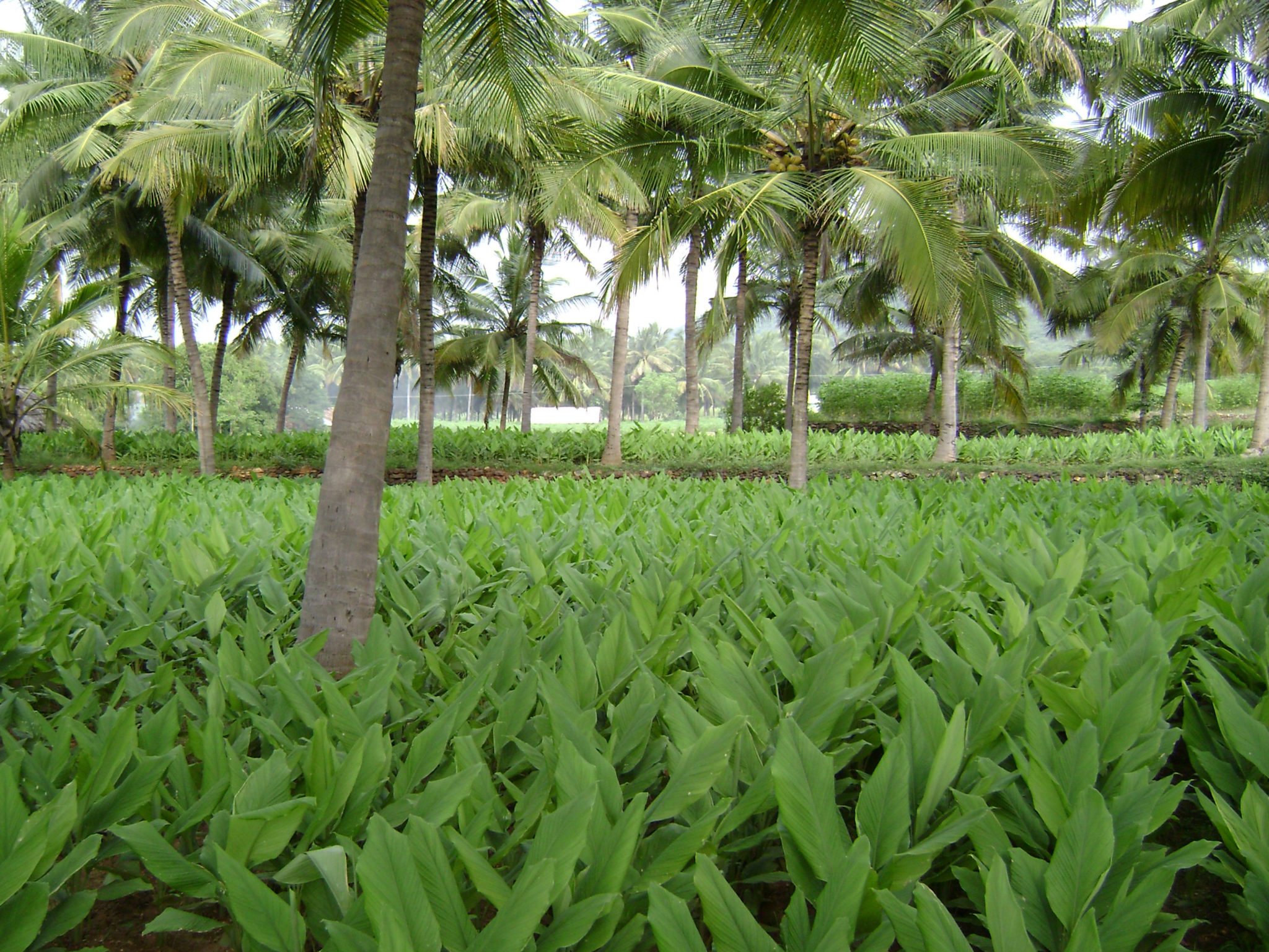
Turmeric ready to be harvested, Tamal Nadu, India. Turmeric is commonly used in Ayurveda as both food and medicine. It kindles agni and is traditionally used for supporting the blood, liver, joints, immune system, skin and digestive tract. By Kavin1996 (Own work) [CC BY-SA 3.0 (http://creativecommons.org/licenses/by-sa/3.0)], via Wikimedia Commons
Ancient wisdom / modern science
It is interesting to see how modern science is increasingly coming to recognise in its own terms some of the ancient insights of Ayurveda. The critical effect of nutrition and digestion on health has been, for a long time, something doctors downplayed as of minimal importance, except in certain cases where there is an obvious connection. This is starting to change with the discovery of the human microbiome, and recognition of the important role that our microbial populations play in keeping our bodily processes in balance, and therefore healthy.
The doshic theory of Ayurveda helps to explain why it is that two people can eat the same standard healthy diet and one thrives whilst the other does not, or why some people suffer side effects to certain drugs and others do not. DNA profiling promises in future to offer tailor-made treatments for health, which is something Ayurveda, through the theory of doshas, has understood for centuries.
Even more significant, perhaps, is the way in which Ayurveda can explain how stress and our mental/emotional condition affects vata – the first and most important of the doshas – and through it, the nervous system. Primary treatments for imbalance of vata include meditation and pranayama (exercises which work with the life force through the breath). These are the classic practices of yoga, in which context they have a primarily spiritual aim. The contemporary discovery that meditation can potentially help conditions like chronic pain – as expressed particularly by the Mindfulness Meditation movement made popular by Jon Kabat-Zinn [/] – is intrinsic to the Vedic sciences of Ayurveda and yoga, where body and soul have never stood apart. As western thought increasingly rediscovers the truth of this ancient wisdom, then who knows? – perhaps future generations will come to the realisation that the ultimate healing is self knowledge.
Image Sources (click to close)
Banner image: Shirodhara Massage. ‘Shiro’ means head and ‘dhara’ means ‘the dripping of oil like a thread’. This treatment drips warm oil in a steady stream on the forehead, particularly on the brow in the region between the eyes. It pacifies vata and calms the nervous system.
First insert: Lord Dhanvantari, who is considered the original sage or deity of Ayurveda through whose grace and guidance the science can be learned. Traditionally in his four hands are: a leech, a vessel of immortality gaining nectar, a conch shell, and a sphere of energy. Here the fourth hand contains an unknown item, perhaps the famous haritaki fruit widely used in Ayurvedic medicines.
Second insert: Pranayama – breathing exercises which work with the life force through the breath.
Third insert: Taking the pulses, the primary diagnostic technique of Ayurveda.
Fourth insert: An Ayurvedic vegetarian meal.
Fifth insert: Making a herbal pouch for Ayurvedic treatment. Photograph roberharding/Alamy Stock Photo.
Our thanks to Rachael Roberts for her work on the images for this article.
Other Sources (click to open)
Dr SUNIL JOSHI: Ayurveda and Panchakarma: the Science of Health and Rejuvenation, Lotus Press 1997.
An interview with Dr Joshi can be seen on https://vimeo.com/17102967
A talk by Elizabeth explaining more about Ayurveda can be found at https://beshara.org/media/ayurvedic-philosophy-a-talk-by-elizabeth-roberts/
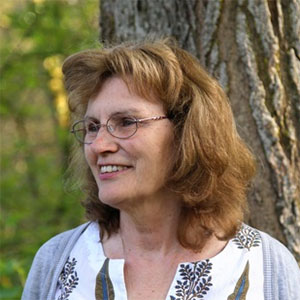
Photograph by Rachael Roberts
Elizabeth Roberts teaches and practices yoga and Ayurveda in the Scottish Borders. She has developed and teaches the only ‘Introduction to Ayurveda’ course offered in Scotland, and is currently the Yoga Philosophy tutor on the Yoga Scotland Teacher Training courses in Glasgow and Edinburgh. She studied English at University of Oxford and Philosophical Inquiry at Glasgow University, and alongside her involvement with yoga and Ayurveda, she spent her career in education, with experience of working at all levels of the education system from primary to post-graduate, as well as in community and adult education. Her subjects have been English, adult literacy and philosophical enquiry. She has also studied and facilitated courses at the Beshara School and is a trustee of the Beshara Trust
Email this page to a friend

Turmeric ready to be harvested in Tamal Nadu, India. Turmeric is commonly used in Ayurveda as both food and medicine. It kindles agni and is traditionally used for supporting the blood, liver, joints, immune system, skin and digestive tract. Left image by Kavin1996 (Own work) [CC BY-SA 3.0 (http://creativecommons.org/licenses/by-sa/3.0)], via Wikimedia Commons
FOLLOW AND LIKE US
If you enjoyed reading this article
Please leave a comment below.
Please also consider making a donation to support the work of Beshara Magazine. The magazine relies entirely on voluntary support. Donations received through this website go towards editorial expenses, eg. image rights, travel expenses, and website maintenance and development costs.
READERS’ COMMENTS

Great Post! Thanks for sharing
love the information please keep sharing more,for more details visit our official website.
Nice Information. I found this very helpful for my project
Informative post,thanks for sharing.
Thankyou, how amazing are the Dosh’s and how we are able to self heal, i really enjoyed hearing from Dr Vasant and Dr O and Dr Joshi.